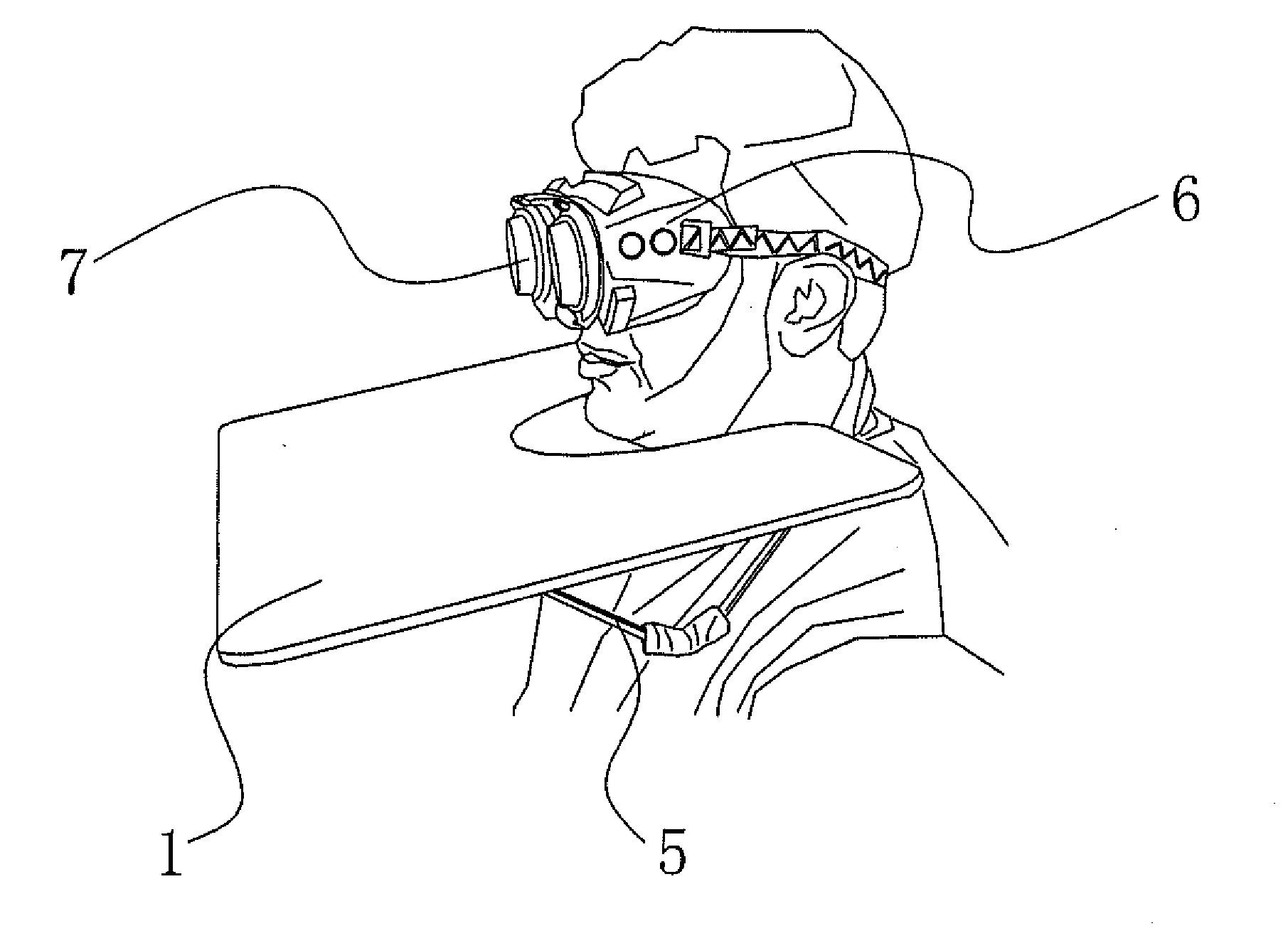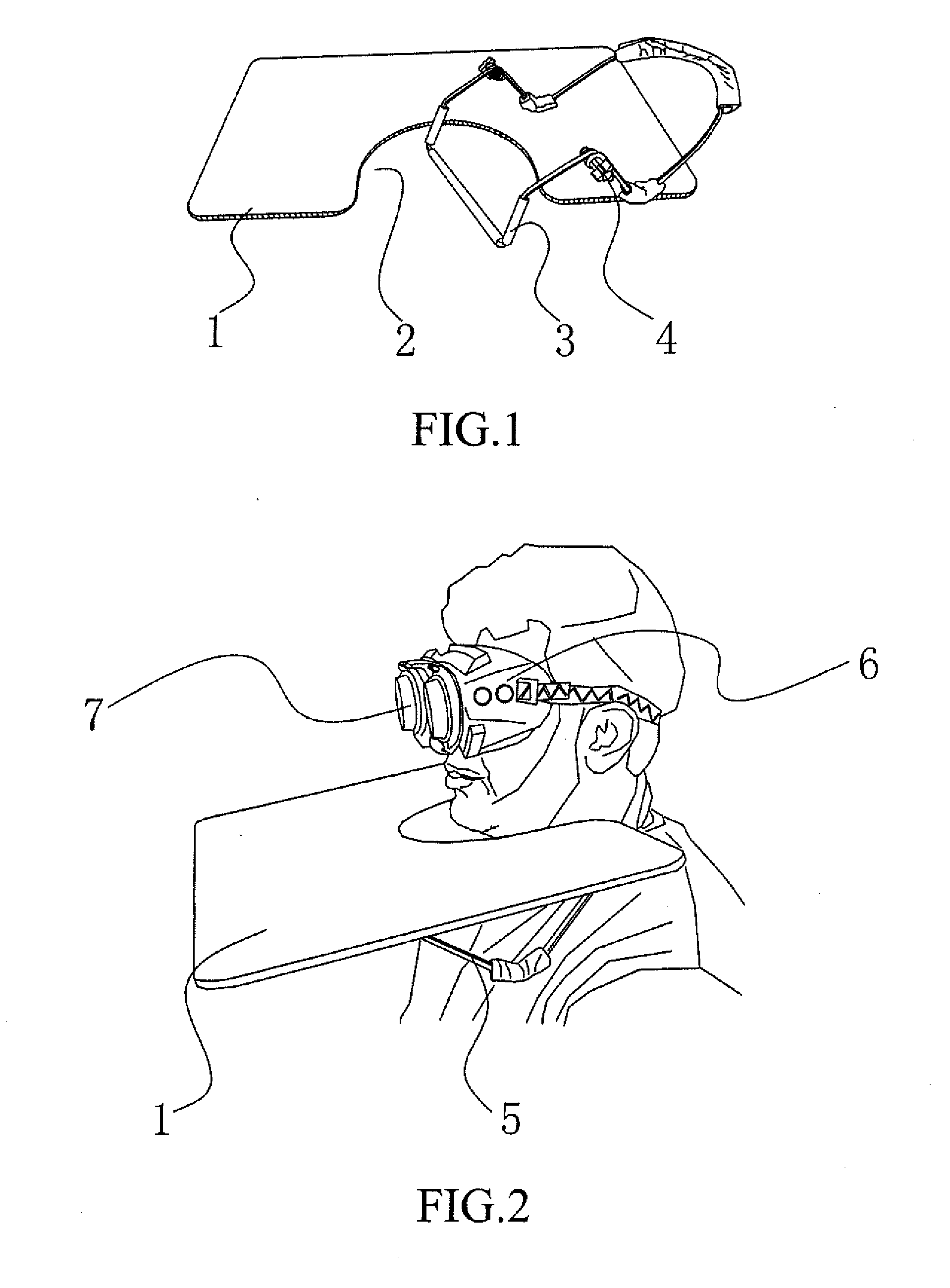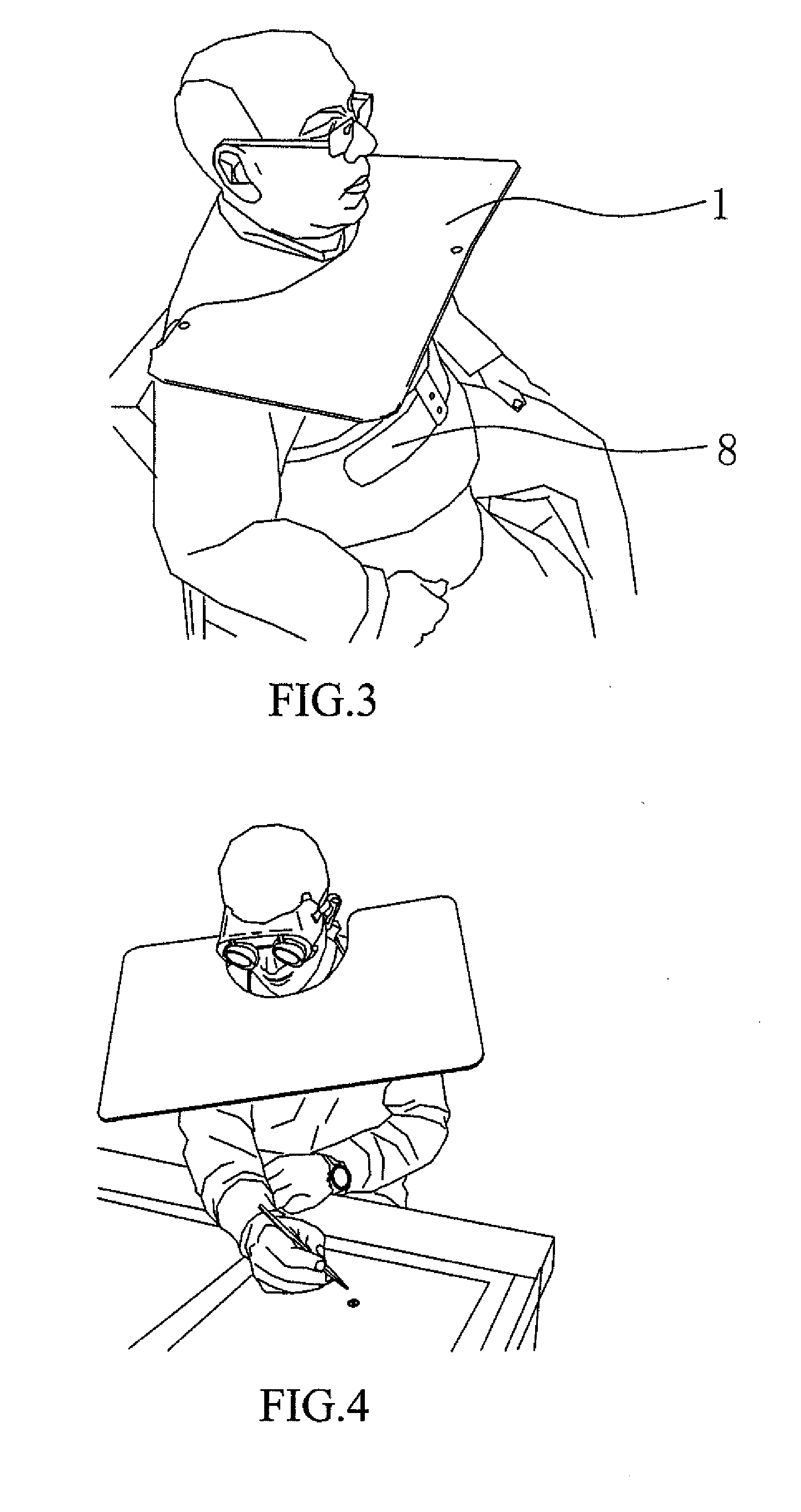Wearable systems and methods for treatment of a neurocognitive condition
a neurocognitive and wearable technology, applied in the field of wearable systems, can solve the problems of inflexible to different individuals' shoulder heights, poor outcomes for individuals with spatial neglect after standard and usual rehabilitation care, and inability to move during prism adaptation,
- Summary
- Abstract
- Description
- Claims
- Application Information
AI Technical Summary
Benefits of technology
Problems solved by technology
Method used
Image
Examples
example 1
Prism Adaptation Treatment Using Embodiments of the Invention
[0044]In this Example, a patient underwent the Kessler Foundation Prism Adaptation Treatment (KF-PAT™) for left-sided spatial neglect (after right-brain damage) using the wearable system of the invention. The same principles and systems apply for treating right-sided spatial neglect.
I. Determination of Patient Eligibility
[0045]Patients with spatial neglect were defined by standardized assessment. To detect the presence and measure the severity of spatial neglect, the Kessler Foundation Neglect Assessment Process (KF-NAP™) was used. But the Catherine Bergego Scale, the Behavioral Inattention Test (BIT), the Bells test, the Apples test or other established tests detecting and measuring spatial neglect can also be used. Patients were not eligible if they had a history of vertigo (a result of a disturbance of the body's balancing mechanism, located in the inner ear).
[0046]Apparatus
[0047]The following tools were used to complet...
example 2
Results of Prism Adaptation Therapy Session
[0083]Following the therapy session from Example 1, and as shown in FIG. 6, patients with perceptual-attentional “where” bias only (n=7) showed no improvement after KF-PAT™, while those with motor-intentional “aiming” bias only (n=5) or both types of bias (n=12) demonstrated continuous functional recovery. The results suggested that KF-PAT™ using the visual field occluder of the invention may selectively improve function in neglect patients with motor-intentional “aiming” deficits. Goedert, K. M., Chen, P., Boston, R., Foundas, A. L., & Barrett, A. M. (2014). Presence of motor-intentional aiming deficit predicts functional improvement of spatial neglect with prism adaptation. Neurorehabilitation and Neural Repair, 28(5), 483-492.
[0084]The invention is further described by the following numbered paragraphs:
1. A wearable system for treatment of a neurocognitive impairment, disease or disorder in a patient in need thereof, comprising:
[0085]a v...
PUM
 Login to View More
Login to View More Abstract
Description
Claims
Application Information
 Login to View More
Login to View More - R&D
- Intellectual Property
- Life Sciences
- Materials
- Tech Scout
- Unparalleled Data Quality
- Higher Quality Content
- 60% Fewer Hallucinations
Browse by: Latest US Patents, China's latest patents, Technical Efficacy Thesaurus, Application Domain, Technology Topic, Popular Technical Reports.
© 2025 PatSnap. All rights reserved.Legal|Privacy policy|Modern Slavery Act Transparency Statement|Sitemap|About US| Contact US: help@patsnap.com



